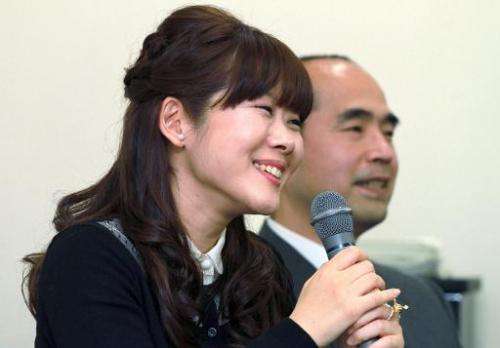Riken researcher Haruko Obokata announces that she discovered a simple way to turn animal cells back to a youthful, neutral state, a feat hailed as a "game-changer" in the quest to grow transplant tissue in the lab, January 28, 2014
A Japanese research institute Tuesday said it was probing its own study that promised a 'game changer' way to create stem cells, a feat hailed as revolutionary for the fast-developing field.
The findings, published by Japanese researcher Haruko Obokata and American partners in a January edition of the British journal Nature, outlined a simple and low-tech approach in the quest to grow transplant tissue in the lab.
But the national institute Riken said Tuesday it had started an investigation over "questions" about the methodology and input data of the study, appointing several in-house and outside experts to pore over the revolutionary report. Obokata works for the institute.
At issue are allegations that the researchers used erroneous image data for the high-profile article, local media reported.
"The experts have already started hearings for the researchers involved in the articles," an institute spokesman said Tuesday, but declined to give further details.
But for the moment the institute is standing by the results—a spokesman insisted the "findings themselves are unassailable."
Stem cells are primitive cells that, as they grow, differentiate into the various specialised cells that make up the different organs—the brain, the heart, kidney and so on.
The goal is to create stem cells in the lab and nudge them to grow into these differentiated cells, thus replenishing organs damaged by disease or accident.
The researchers' groundbreaking findings said that white blood cells in newborn mice were returned to a versatile state by incubating them in a solution with high acidity for 25 minutes, followed by a five minute spin in a centrifuge and a seven-day spell of immersion in a growth culture.
Called stimulus-triggered acquisition of pluripotency (STAP) cells, the innovation breaks new ground.
Until now, only plant cells, and not mammal cells, have been found to reprogramme back to a youthful state through simple environmental factors.
Journal information: Nature
© 2014 AFP






















